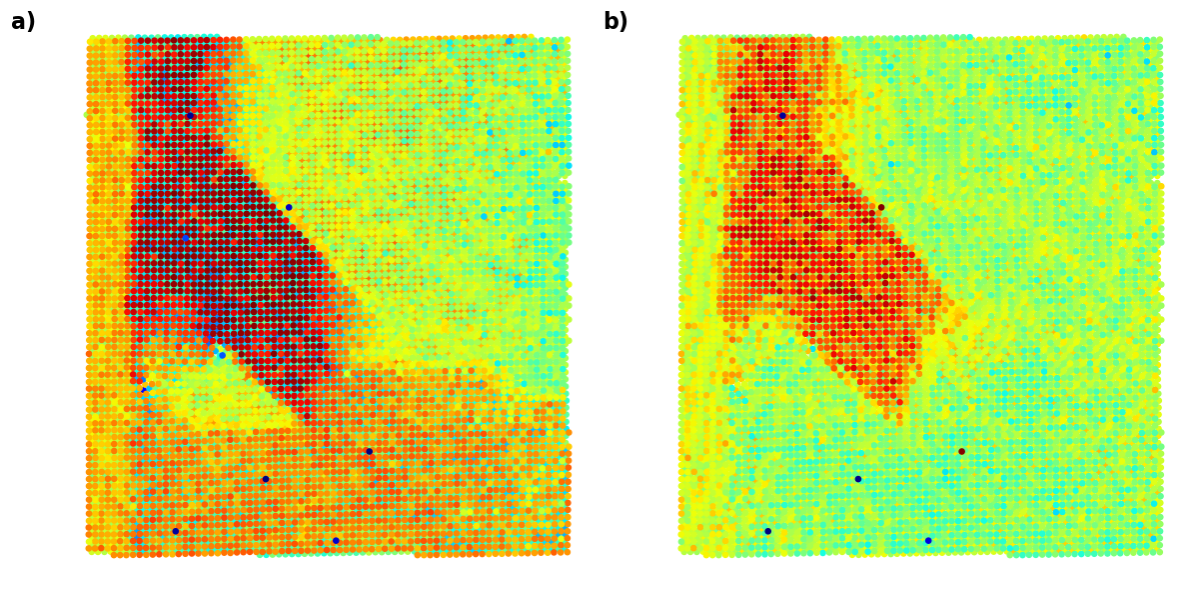Conditional Translationally Invariant VAE
In this chapter, we introduce the conditional translational Variational Autoencoder (CtVAE), which incorporates translational vectors (, ) and conditional variables, such as cation type, into the latent space. The CtVAE captures positional shifts alongside intrinsic variations, enabling the analysis of system-specific physical properties. This framework provides a structured approach to studying translation-related phenomena while maintaining the distinct physical and chemical characteristics of the components.
The clear separations and clustering in the latent space reflect the incorporation of physical constraints and rotational invariances.ß
Both , , and , appear to capture information about the domain structures. However, this raises the question: are we utilizing an excessive number of latent variables to represent the system?



